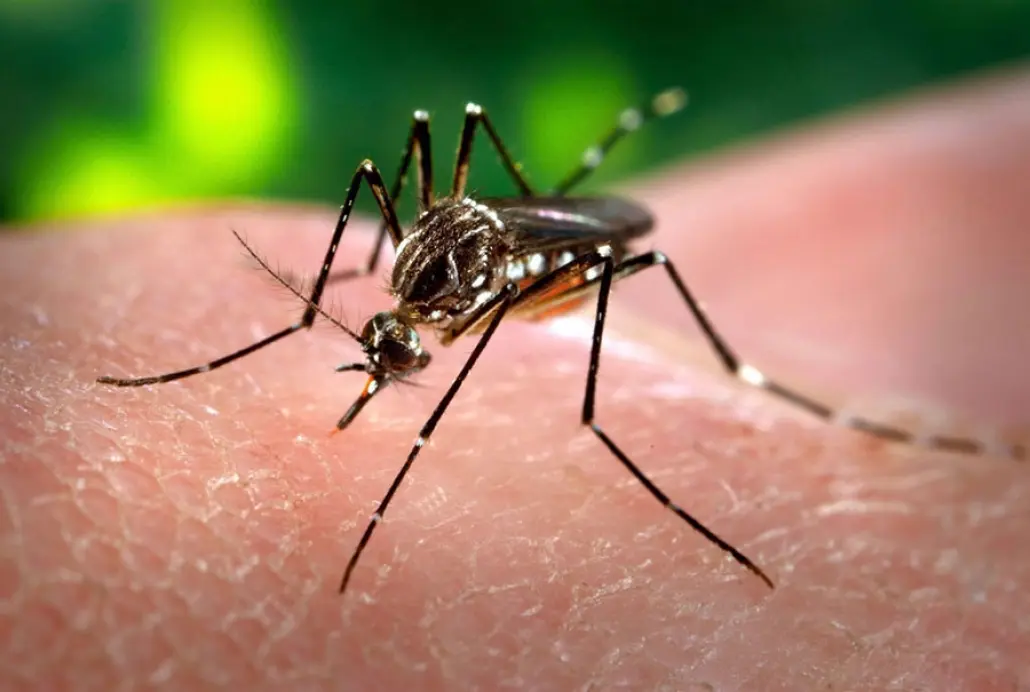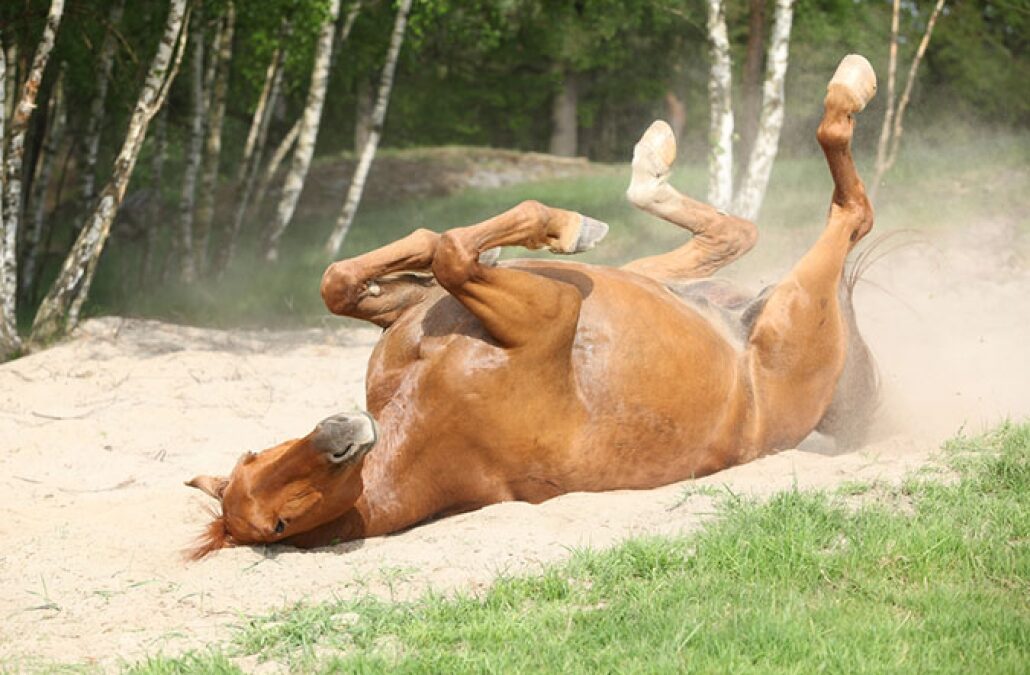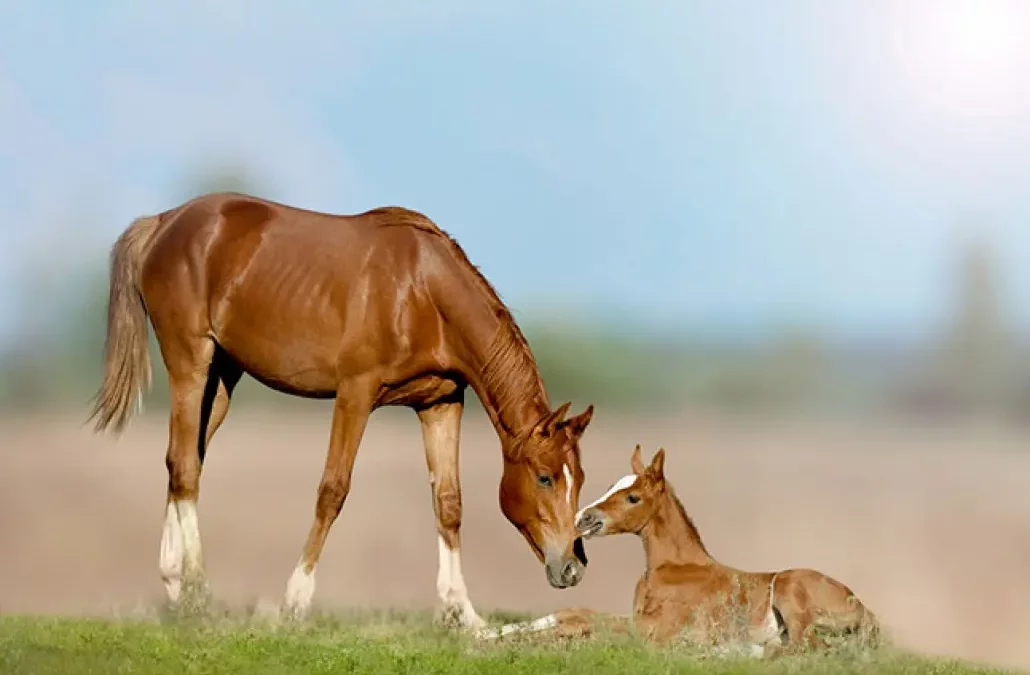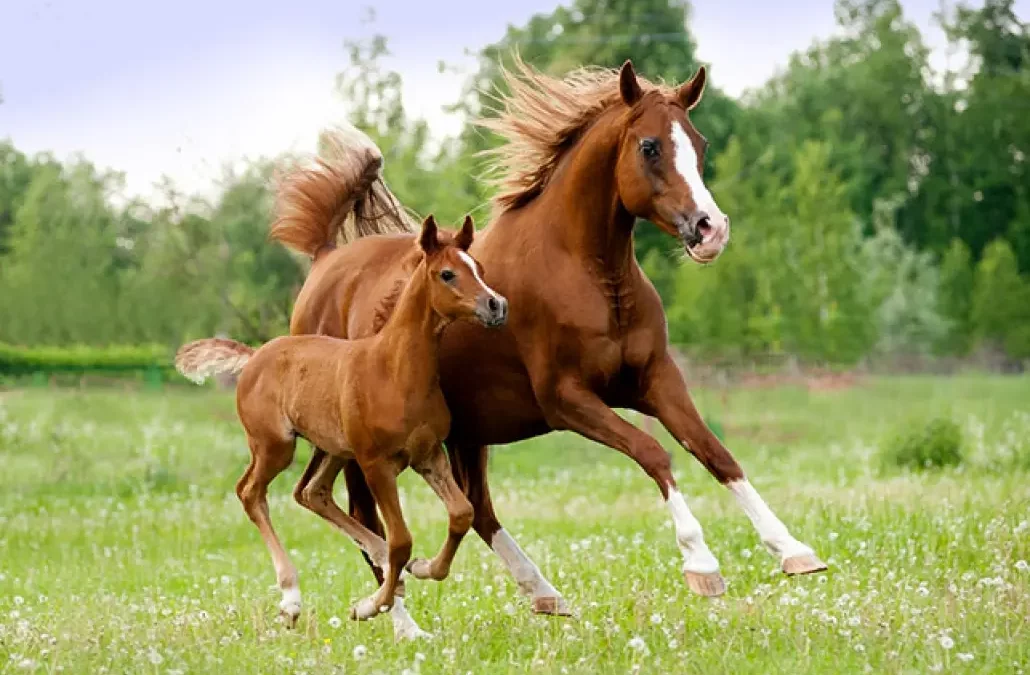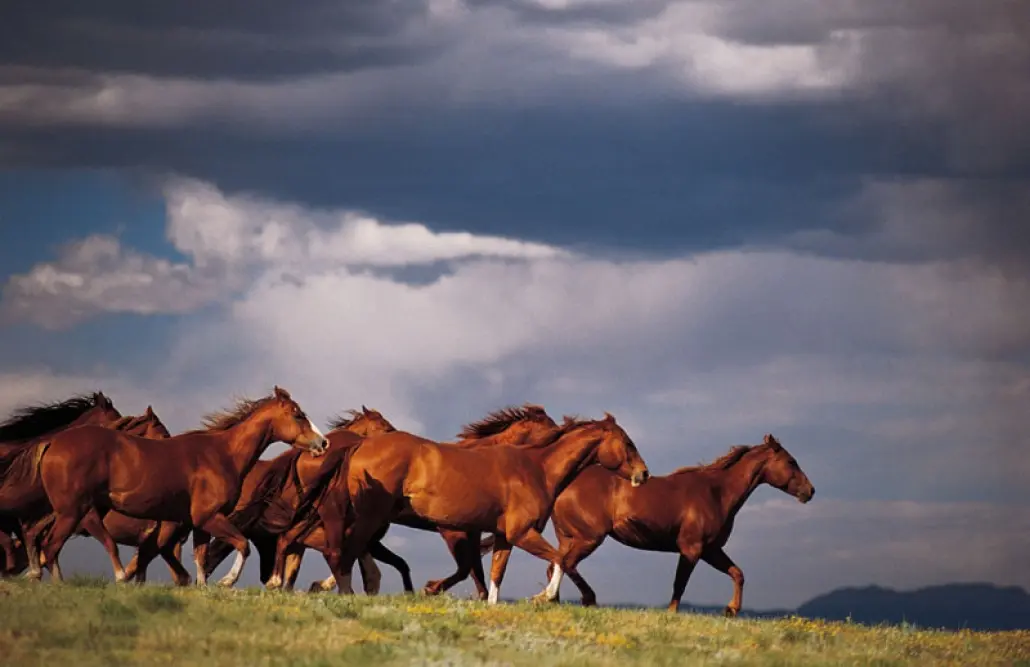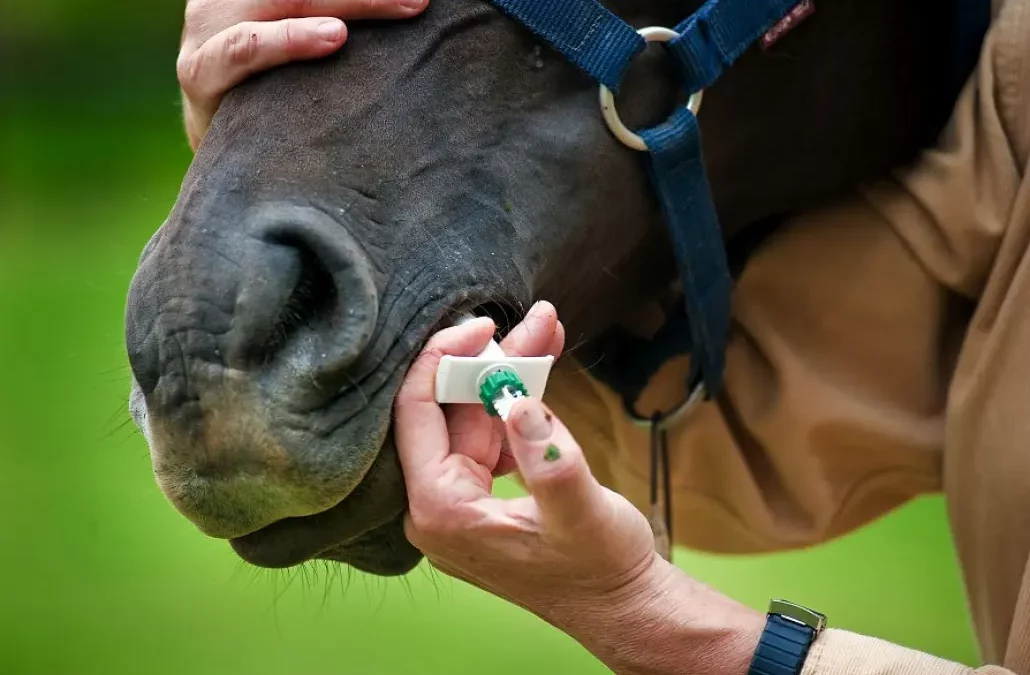The most common signs of WNV infection in horses include stumbling, uncoordination, weak limbs, partial paralysis, muscle twitching and in some cases, death. Fever has occurred in less than one fourth of all confirmed equine cases.
From 1999 to present various clinical signs of WNV have been observed. Each horse may exhibit any combination of these symptoms, which include:
- Muzzle Tremors. The muzzle will twitch sometimes for hours, sometimes for days. There will be no apparent reason for it — no flies. Just a constant twitch.
- Muscle Twitching. The horse looks like he is trying to get flies off his body.
- Behavior. Depression is common. Hyper-responsiveness such as flinging around a stall, and other anxieties. Sweating has been noted, but does not always occur.
- Head pressing, aimless wandering or circling.
- Facial Paralysis. On one or both sides of face. The right ear may droop but the left ear stand up. The muzzle may be paralyzed on just one side or both sides so that the lips won’t seal and the horse is constantly drooling.
- Vertigo-Balance problems. The horse may actually lean on a wall to stand up. He stumbles a lot and is uncoordinated.
- Tongue Paralysis. The tongue may lop out of the mouth. The horse doesn’t seem to be able to pull its own tongue back into the mouth. And in some advanced cases, the tongue has to be pushed back into the mouth but if the muzzle is paralyzed, the tongue will just drop back out.
- Weak. Stiff walking. Tired.
- Impaired vision
- Convulsions
- Collapse. Usually in advanced cases. With some the horse will fall to its front legs as if praying and can’t get up. In others, the horse may just sit down and may be unable to stand on the back legs. He’ll dog sit. If collapse is on all four legs, this case probably won’t make it because the horse can’t stand on his own and these are the most difficult cases to care for.
How long does it take for the symptoms to show after they have bitten by the mosquito?
The incubation period is between 5 and 15 days from the date of the mosquito bite.
Treatment Recommendations
Treatment is vital for any horse with WNV. At this present time there is no specific “medicine” for a horse once he develops WNV, although there are some promising advances being made in that area. . However, your veterinarian will be able to provide supportive therapy that can save your horse’s life if he does develop WNV.
For advanced cases, horses usually have to be hospitalized. For mild cases, home care may be adequate. But regardless, nursing care and treatment is important to the recovery process and each animal is assessed according to it’s age and health. And in cases of WNV, 33% will die, 50% will fully recover and 17% will have ‘problem recoveries’ — relapse or incomplete recovery.
Over the last few years, it has also been discovered that of those horses that recover, some will relapse within a few months or a year. Some of these will die also.
The focus of therapy is to decrease brain inflammation:
1) Treat the fever (if any), and provide supportive care, which may require 1-4 weeks of intermittent therapy. Common medications include flunixin meglumine (BanamineÒ), dimethyl sulfoxide (DMSO), and dexamethasone.
2) Sometimes fluid therapy is needed for animals not able to drink.
3) Oral or intravenous feeding may also be necessary for horses unwilling to eat.
4) For horses unable to rise slinging is recommended 2 to 3 times per day to aid in circulation and to try to prevent pressure point sores. (bed sores).
5) Head and leg protection is also frequently needed.
Recovery Times
Recovery times depend upon the health and age of the affected horse. Many horses will improve within 5 to 7 days of displaying clinical signs, however about 20-30% can exhibit severe neurological deficits for several weeks. After 3 to 5 days, horses that are recovering may exhibit a sudden recurrence of clinical signs. This may be of short duration or horses may become suddenly recumbent and either die or require prolonged treatment. If horse has clinical signs that last a long time, intravenous catheterization or hospitalization is recommended.
Horses with WNV sometimes develop other problems because they were weakened by WNV. Joint and tendon infections, sheath infections, pneumonia, and diarrhea can all occur as secondary events. Monitoring for appropriate fecal output is also important and horses may need to be treated with mineral oil during the course of disease.
Will the horse return to its normal health?
When affected, most horses start to show improvement in 3-5 days with an overall mortality rate of 30-35%. With animals who are unable to rise, mortality rate is over 65%. Once the horse has demonstrated significant improvement, full recovery within 1 to 6 months can be expected in 90% of the patients. Residual weakness and ataxia appear to be the main problems. The long term effects of the disease in horses is not yet known.
West Nile Virus vaccine for horses.
Horse owners should consult their veterinarians regarding its use. The vaccine shots are no value if they aren’t given prior to exposure to the disease. If the horse develops WNV it is too late for the shot.
The vaccines require two doses, administered three to six weeks apart, and full protection doesn’t develop until four to six weeks after the second dose. Sometimes a third does is recommended. Boosters are recommended, but recommendations vary and depend upon mosquito infestation where you live.
It can take from 7 to 12 weeks for the horse to develop maximum resistance to infection.

